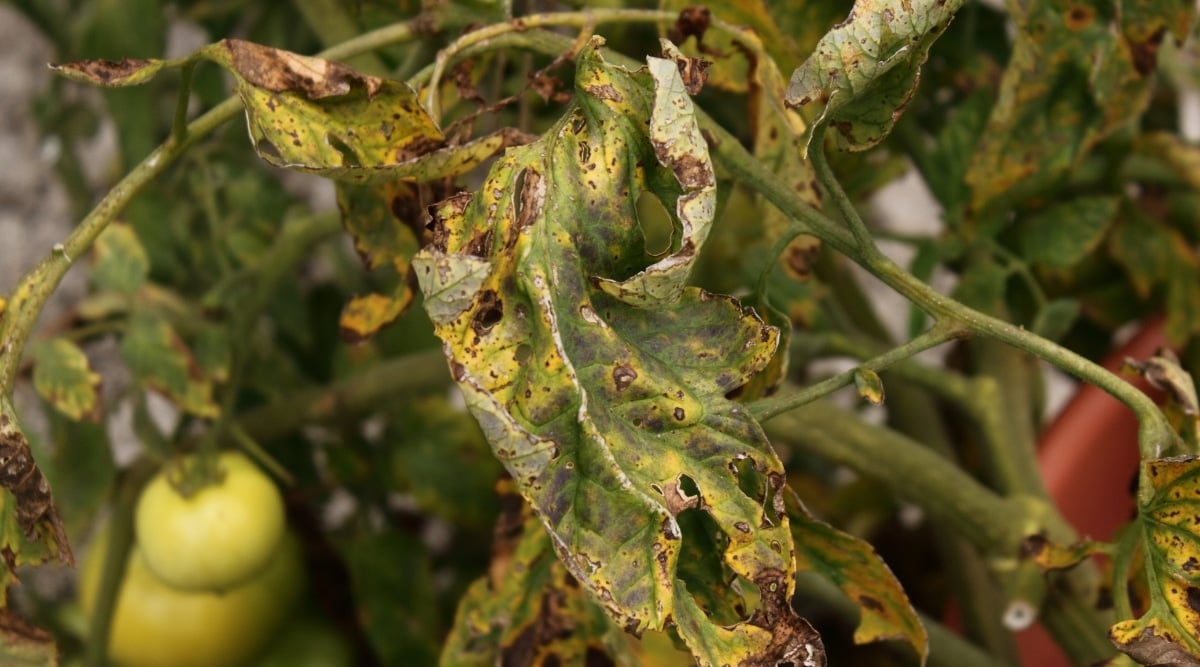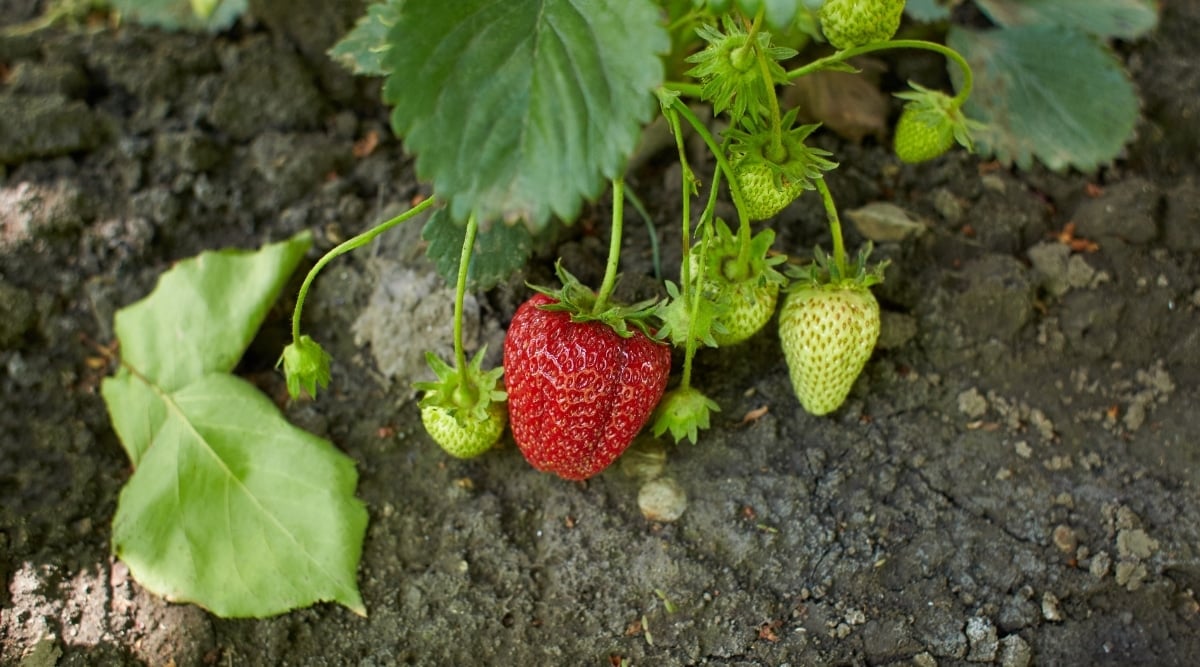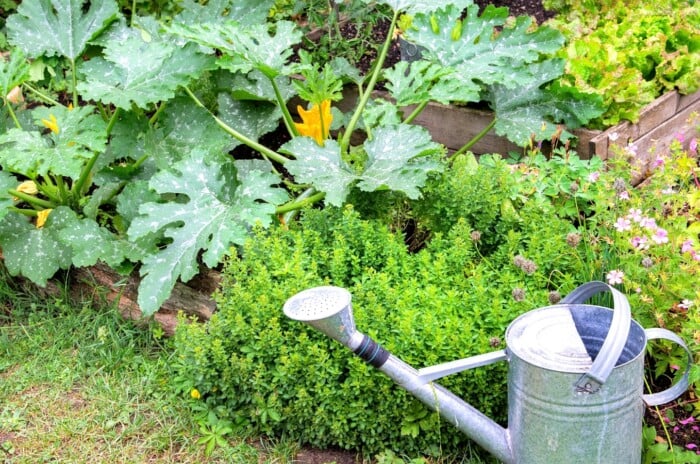Can You Grow Tomato Plants and Strawberries Together?
Thinking of growing strawberries and tomatoes together as companions in your garden, but aren't quite sure if it's a good idea? In this article, gardening expert Liessa Bowen examines if these two popular garden plants can be grown together, or if they are better off paired with something else.

Contents
Tomatoes and strawberries are both very popular garden plants, well-loved for their delicious fruits. The sweet taste of strawberries in the springtime and the freshest, most flavorful homegrown tomatoes in the summer make gardening a very worthwhile (and very tasty!) endeavor. If you want to grow both strawberries and tomatoes, you may wonder if you can plant them together.
Many garden plants grow well together, and those that benefit each other are known as companion plants. Companion plants may benefit their neighbors by providing shade, repelling insect pests, providing support, or attracting pollinators. Companion planting is a well-established practice utilized by many successful gardeners.
Sometimes, however, there are plants that should not be grown together. Some plants may be a good companion for one neighbor, but not for another. Poor companion choices may compete for nutrients, space, or sunlight, or they may both be susceptible to the same pests and diseases, thereby increasing the chance of exposure. Other plants make neutral companions, providing no apparent benefit or detriment.
Let’s take a closer look now at both tomatoes and strawberries to find out if they make good garden companions, or if you should pick something else to pair them with.
The Short Answer
Tomatoes and strawberries do not make good companion plants. You could grow them together, and it’s possible they will both do fine. But both tomatoes and strawberries are both highly susceptible to two fungal diseases called “verticillium wilt” and “anthracnose,” which can easily spread from one plant to another. It’s best to plant tomatoes and strawberries in different areas of the garden to minimize the spread of these diseases.
The Long Answer

Even though these two plants are very different, they are both susceptible to some of the same diseases. Two fungal infections in particular, verticillium wilt and anthracnose, can cause real problems.
Infected plants will experience severe damage to both leaves and fruits, causing failed harvests and sometimes even plant death.
If you do want to grow both of these plants in your garden, you should try to plant them far apart. This will minimize the risk of cross-contamination if one or the other becomes infected with a fungal disease. 0
It may not be possible to completely prevent certain diseases, because they commonly occur in nature, but you can practice a number of good gardening techniques to help reduce the risk of plants contracting pests and diseases.
Verticillium Wilt

Verticillium wilt is a common fungal disease that can affect a wide variety of fruits, vegetables, shrubs, and trees. The fungus naturally lives in soil and can be easily passed to susceptible plants, especially if they become weakened.
Symptoms include yellowing and wilting of leaves, eventually leading to leaves turning entirely brown and dying. Plants may look stunted or deformed, and fruits will become shriveled and pale.
Anthracnose

Anthracnose is a very common fungal disease that affects both of these plants, and also many other fruits, vegetables, and even trees. It causes brown patches to develop on leaves, spreading from small spots to entire leaves.
It also causes fruits to develop sunken, mushy spots that begin as small dots and develop into large rotten areas, eventually rotting the entire fruit. Anthracnose easily spreads from one plant to another by spores.
Prevention

You can help prevent and control both verticillium wilt and anthracnose by:
- Crop rotations, reducing the buildup of spores in one area
- Don’t allow ripe fruits to touch the soil surface
- Harvest ripe fruits; don’t allow overripe fruits to stay on plants
- Grow plants in well-drained soil
- Water from below, keeping moisture off leaves
- Buy seeds and plants that are resistant to fungal infections
- Spray preemptively with a fungicide
- Promptly remove infected plants to prevent spread
- Do not compost infected plants because fungus spores will remain viable
Growing Tomatoes

Tomatoes are annuals and are one of the most popular summer crops grown by hobby gardeners. They are easily grown by seed and the adventurous gardener will find plenty of interesting options to try.
Tomatoes are also widely available during the spring and summer as seedlings. You will find less variety if buying young plants, but this allows gardeners to save time by planting a healthy young start.
Tomatoes are easy to grow in containers, raised beds, and traditional garden settings. You can even incorporate them into your flower garden if you find yourself with a bit of extra space! As long as you have a location with full sun and good soil, you probably have enough room to grow at least one healthy plant.
Basic Tomato Plant Needs
Tomato plants have basic growth needs. This includes providing them the right amount of sunlight, water, and space. You’ll also need to properly fertilize, and make sure they are planted in well-maintained soil. Let’s take a deeper look at each growth need.
Sunlight
Tomatoes thrive in full sun and will grow the healthiest and with the most abundant fruits with ample sunlight. For best results, plant in a location that receives at least 8 hours of direct sunlight each day.
Water
Tomatoes benefit from regular watering and typically require 1 to 2 inches of water per week. When providing irrigation, water from below and try to avoid getting unnecessary water on the leaves and fruits.
Soil
Tomatoes grow best in neutral to slightly acidic (pH between approximately 6.5 and 7.0) soils. Soil should be rich and loamy, well-drained, and high in organic matter.
Fertilizer
Tomato plants will benefit from some light fertilization during the middle part of the growing season. You can add a fertilizer product that is designed for tomatoes and other garden vegetables, or you can use a nutrient-rich organic compost.
Space
Tomato plants come in different varieties, from sprawling indeterminate-growth plants to compact bush varieties. Almost any tomato plant will benefit from a growth support, such as a cage, stakes, or a trellis.
Maintenance
Be alert for any early signs of pests and disease. Mulch around your plants in the summer to help retain soil moisture. Prune off suckers to help maintain good airflow and encourage better production.
Tomato Companion Plants
Tomatoes have a number of great companion plants. They benefit from companion plants that will help repel pests and attract pollinators. Some companion plants are even said to help improve the tomato’s flavor! A few choice tomato companion plants include:
- Basil
- Borage
- Bush beans
- Chives
- Garlic
- Marigolds
- Nasturtiums
- Parsley
- Sunflowers
Growing Strawberries

If you’ve ever had the opportunity to compare a store-bought strawberry with a fresh-picked strawberry, you know that fresh, home-grown strawberries are the winners when it comes to their sweet taste. You can easily grow strawberries at home, even if you have limited space. They are small, compact, and are easily grown in containers.
Strawberries are perennials that can generally be grown in zones 4 to 9. They are typically purchased as young plants from a nursery or garden center, although there are numerous online retailers offering plant that have been started from seed as well. Online sellers usually offer a wide variety of bare-root plants.
Basic Strawberry Plant Needs
Like tomatoes, strawberries also have basic growth needs to maximize their fruit production. They will need proper amounts of sunlight and water. They also need to have the right balance of soil and fertilizer. Let’s take a deeper look at the basic growth requirements for strawberries.
Sunlight
Strawberries thrive in full sun, ideally at least 10 hours of sunlight per day. Plants grown in full sun will be a rich dark green, will produce the most flowers, and will develop an abundant supply of sweet berries.
Water
Keep your strawberry plants moist by watering regularly to supplement any lack of rainfall. They do best with 1 to 2 inches of water per week.
Soil
Strawberries will grow best in soil that is rich in organic matter, loamy, and well-drained. Mulch around your strawberries to help retain soil moisture and prevent berries from touching bare soil where they may pick up contaminants and diseases.
Fertilizer
Strawberries will benefit from an organic fertilizer to help keep the plants vigorously growing, blooming, and producing fruits.
Space
Strawberries reproduce rapidly by sending off runners, which quickly populate an area with a dense ground cover of plants. Plants should be spaced approximately 12 inches apart and runners can be removed to allow your plants plenty of room to grow.
Maintenance
Keep your berry patch weeded because weeds can easily outcompete your strawberries. Trim runners and refresh your berry patch each spring to allow the healthiest and most vigorous plants to grow. Mulch in summer to retain moisture, and in winter to protect plants from hard frosts.
Strawberry Companion Plants
There are many plants that will grow well with strawberries and provide benefits in the garden. Companions for strawberries can help improve yield, repel pests, and attract pollinators. Some excellent companion plants include:
Final Thoughts
Companion plantings are an excellent way to grow different crops together and enjoy some tangible benefits. Not all plants complement each other, however, such as tomatoes grown with strawberries. Plants that are prone to the same pests and diseases are best grown farther apart from each other, and closer to other, more suitable, companions.
You can still enjoy the sweet taste of strawberries and perfect home-grown summer tomatoes, grown in your own garden. Just give them each separate locations and choose more beneficial neighbors for each.









